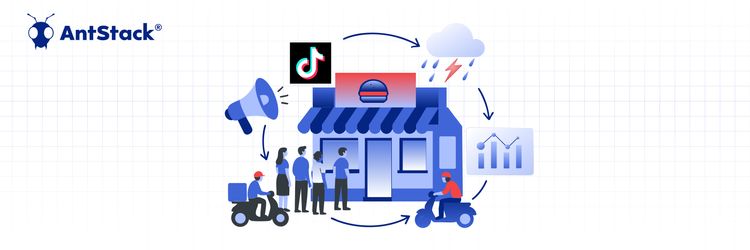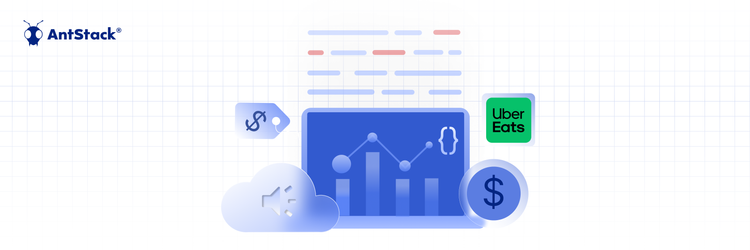The Infrastructure Behind the Last Human Edit: Why AI Still Needs You (And Serverless Pipelines)
Storage and backend services are considered to be integral parts of the business. But it is necessary to opt for the proper technology for the business enterprise. However, it is necessary to seek information about the various kinds of computing.
Many people have the wrong notion that cloud computing and serverless computing are the same. So, in this write-up, we are going to throw some light into cloud computing vs. serverless computing so that you can understand the difference between them.
Cloud computing vs. serverless computing
Cloud computing is regarded as a technology that provides a suitable choice for potential users to share different services and resources over the internet. It is inclusive of different backend and storage solutions, like health checks, traffic distribution, and timeouts, to name a few.
Serverless computing is regarded as a kind of cloud computing in which the cloud service provider handles the app’s backend infrastructure. At times, the users mistakenly take the computing technology as the technology that is devoid of servers. But it is wrong. The serverless applications make use of the server resources to scale different functions, catering to their needs.
Let’s check out some real life examples of cloud computing!
About cloud computing
Cloud computing happens to be the model that allows on-demand and convenient network access to the configurable computing resources shared pool. Thus, you can provision and release the resources with the least amount of management effort. The cloud architecture offers access to the services and applications via a secure interface. Thus, you can access them from the connected device. It provides a suitable opportunity to businesses of different sizes so that they can use the cloud-managed services to decrease costs. Thus, they help in streamlining different operations.
About serverless computing
Serverless computing refers to a cloud computing model where the cloud service providers handle the cloud computing infrastructure necessary for offering the resources as per customer requirements. Speaking of serverless technology, though the servers exist, the good news is that the developers need to spend their energy and time to handle such servers.
Cloud computing happens to be the umbrella term for different technologies, like PaaS, or Platform as a Service; IaaS, or Infrastructure as a Service; and SaaS, or Software as a Service. Serverless computing rents out different computing resources that is important for a specific moment. It decreases the operational costs as the potential users get charged for the time when the code executes instead of paying for the complete server.
The specific architecture decreases the development time as the service provider handles the server infrastructure. It provides a suitable opportunity for the developers to concentrate on creating different apps faster without the need to worry about server maintenance and server setup. Server computing can make the right use of autoscaling according to resource consumption.
Why choose serverless computing?
Now, we are going to talk about the different benefits of serverless computing.
Scalability
Serverless computing enables hassle-free and faster application scaling as it makes use of automatic scaling. If the app needs extra resources, you will be able to scale up faster without the need to invest in expensive cloud and hardware services. Thus, it helps decrease the downtime. It also helps improve the performance.
Saving your money
A primary benefit of serverless computing is that it helps you save a lot of money. Though you need to pay for your own servers, the business will pay for the computing power it is using. Hence, serverless computing is considered an excellent choice for startups that do not have sufficient budget for cloud investments.
Enhanced efficiency
As you opt for serverless infrastructure, you do not need to carry the hassles of uploading the code to different servers or performing the backend configuration to launch the app’s working version. So, you will be able to focus on creating the app and marketing it quicker.
Now, we are going to talk about the differences between serverless computing and cloud computing. Check it out!
Scaling differences
Scaling gets automated in server-based computing. It is performed automatically as per the total count of different requests. Speaking of the cloud computing technology, the clients should scale the infrastructure down and up according to their needs.
Structural differences
The primary difference between cloud computing and serverless computing is that in serverless computing, the cloud service provider manages the entire infrastructure. So, the potential user does not need to worry about it. In terms of cloud computing, the potential client and the potential users can handle the backend and the infrastructure.
Resource allocation
Speaking of cloud computing, potential users have to allocate different resources manually, depending on the demand. The resources get allocated automatically in serverless computing, depending on the needs and demand.
Deployment
The end user can manage the cloud computing deployment. Speaking of serverless computing, it is executed automatically as the apps get deployed while functioning.
Automation level differences
Serverless computing provides excellent automation levels for potential users.
##Security
Speaking of the security parameters, cloud computing is a worth mentioning aspect. A primary difference between serverless computing and cloud computing is that cloud computing can be integrated within the system, which is challenging for the encroachers, since each client comes with dedicated servers. Though recovery and backup are easy in cloud computing, they prevent unanticipated data loss.
Serverless computing turns out to be the major cause of different security concerns. It is due to the fact that a dedicated physical server is not assigned to the business. Thus, the cloud service provider executes the code from different customers through the singular server. So, the potential user will have reduced control over the underlying infrastructure, which leads to security problems for sensitive data.
Costs
Serverless happens to be the pay-for-what you use model, so you have complete control over the costs. Hence, you will pay only for the resources you are using. A bill will be generated each month, depending on the use. It is necessary for small businesses that are not using different resources.
Cloud computing happens to be a subscription-based service, in which you will pay similar monthly fees. It happens to be the sought-after option as the resources’ fluctuating usage does not impact the billing cycle.
Use cases
Speaking of serverless computing, it provides support for the microservices architecture. The client thus demands smaller services that can perform a single job. The primary and proper instances of serverless computing are AWS Lambda, Google Cloud Functions, and Microsoft Azure Functions. Individuals and businesses can make the right use of cloud computing for high-performing apps, backup, recovery, and storage.
The future of cloud computing and serverless computing
There are certain implications and changes that can take serverless computing to another level. If the developers can concentrate on the code rather than the infrastructure, it will help save plenty of resources and time. So, productivity and innovation will be enhanced in different business enterprises. Cloud computing happens to be an integral part of different business enterprises, starting from small to large. But the user interface improvements and enhanced security will help it become a sought-after and more feasible option.
Choosing between serverless computing and cloud computing: To wrap it up
Cloud computing happens to be the most prominent choice for different individuals and businesses. Serverless computing happens to be the future. It comes with a bunch of benefits, like a higher automation level and reduced costs. Thus, it will execute the workloads through efficient allocation.
Cloud computing cannot serve the fluctuations and constant demands of global and local events. If you are willing to utilize the cloud for limited resources and personal use, cloud computing happens to be the primary choice for you. If you are looking for a specific technology to fulfill the unwavering needs of the business enterprise, it will be a wise decision to choose serverless computing.









